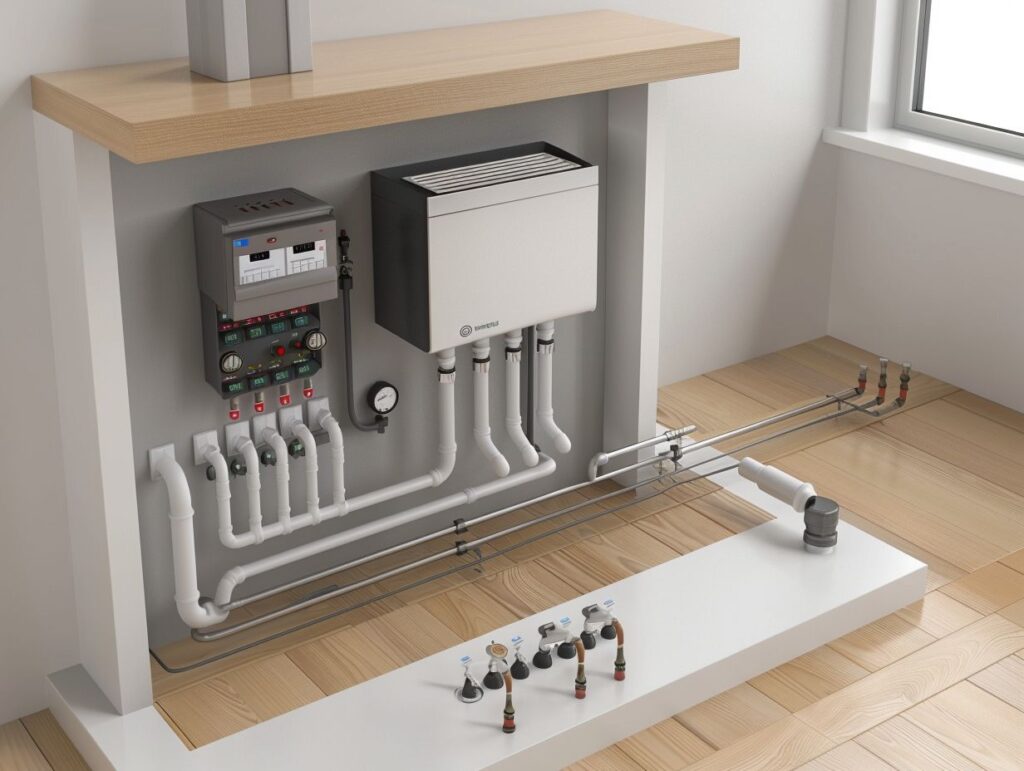If you are considering upgrading your heating system and are unsure about choosing between dual fuel heating and contemporary radiators, this article aims to offer a thorough comparison of both options, emphasizing the advantages of each. Various aspects, such as efficiency, cost-effectiveness, design, and functionality, will be examined to assist you in making an informed decision.
Additionally, the installation procedures for both systems will be discussed, along with a comparison of their energy efficiency levels. Keep reading to discover which option aligns best with your home heating requirements.
Key Takeaways:
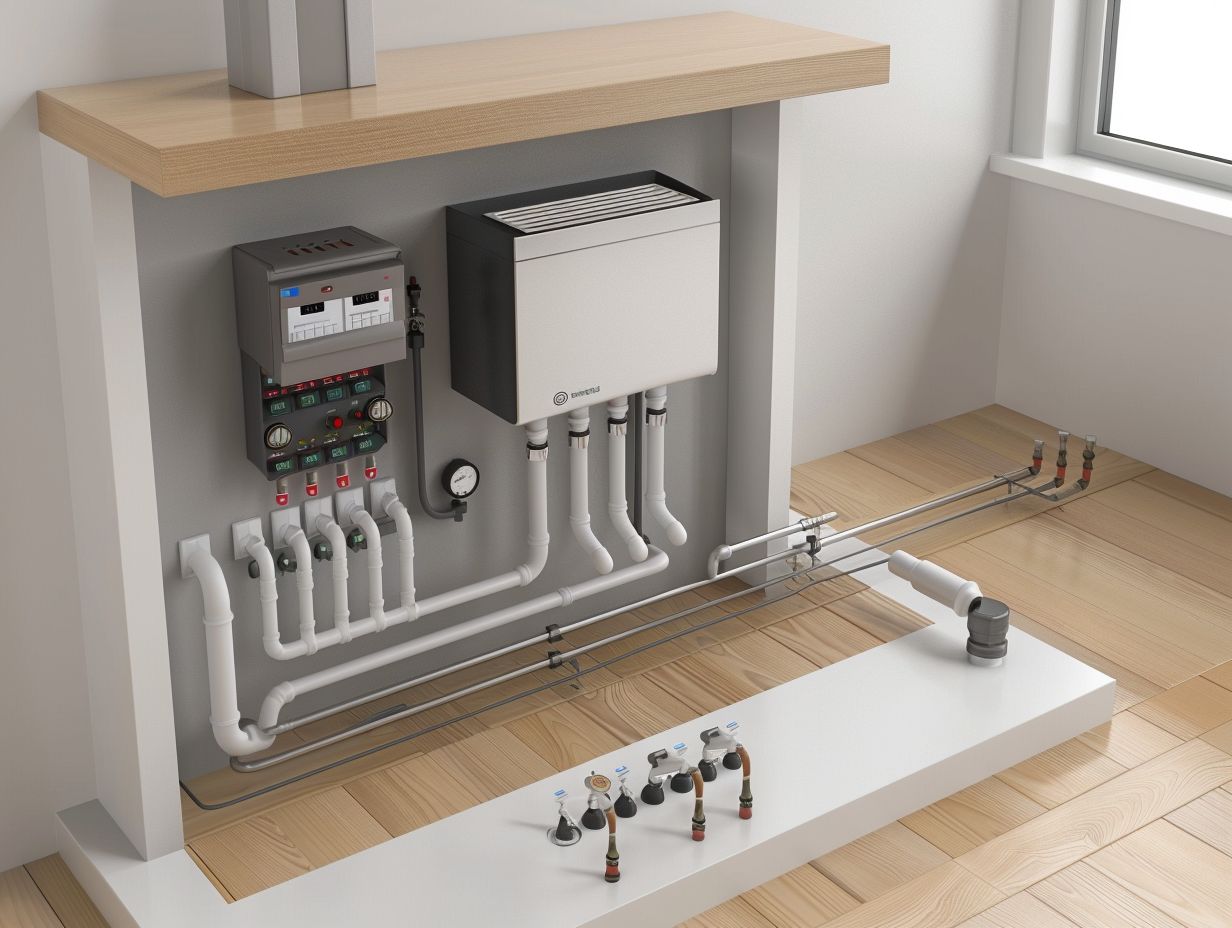
- Dual fuel heating offers both efficiency and cost savings, making it a great option for those looking to reduce their energy bills and environmental impact.
- Contemporary radiators not only provide heat, but also add to the design and functionality of a home, offering a stylish and practical heating solution.
- When choosing between dual fuel heating and contemporary radiators, factors such as home layout, heating needs, budget, and maintenance should be carefully considered to ensure the best fit for your home.
Overview of Dual Fuel Heating and Contemporary Radiators
The overview of dual fuel heating and contemporary radiators delves into the modern heating solutions available to property owners. Dual fuel radiators encompass the advantages of electric and central heating systems, providing a blend of flexibility and energy efficiency.
On the other hand, contemporary radiators emphasize design and functionality while delivering effective heat output. This evolution in heating systems has transformed the approach individuals take to heating their spaces.
Dual fuel radiators make use of both electricity and traditional heating methods, enabling users to switch between sources based on their requirements and cost-effectiveness. The integration of energy-efficient components in these radiators not only lowers utility bills but also contributes to a sustainable environment.
Designs of contemporary radiators have elevated aesthetics to a new level, seamlessly integrating with modern interiors and appealing to those who prioritize both style and functionality in their heating solutions.
Benefits of Dual Fuel Heating
The advantages of dual fuel heating extend beyond conventional central heating systems, as they provide improved energy efficiency and cost-effectiveness. Dual fuel radiators offer the flexibility to alternate between electric and central heating sources, enabling homeowners to optimise their heating expenses according to their requirements.
Efficiency and Cost Savings
When considering heating options, efficiency and cost savings are essential factors to keep in mind. Dual fuel radiators present energy-efficient solutions that can lead to significant savings on heating expenses. By utilising both electric and central heating elements, these systems offer cost-effective warmth year-round.
Dual fuel radiators take advantage of two distinct heating sources to optimise energy conservation. This innovative approach not only enhances efficiency but also reduces overall energy consumption. The seamless integration of electric and central heating components ensures consistent and economical heating, ultimately resulting in long-term cost savings.
Through the use of dual fuel radiators, homeowners can reduce their heating costs without sacrificing comfort. The strategic implementation of dual fuel technology not only improves energy efficiency but also provides a sustainable solution for maintaining a warm and welcoming living environment.
Benefits of Contemporary Radiators
Modern radiators provide a fusion of state-of-the-art design and practical heating solutions. These contemporary heating units not only enhance the visual appeal of a room but also deliver effective heat output to ensure comfort and warmth in every area.
Design and Functionality
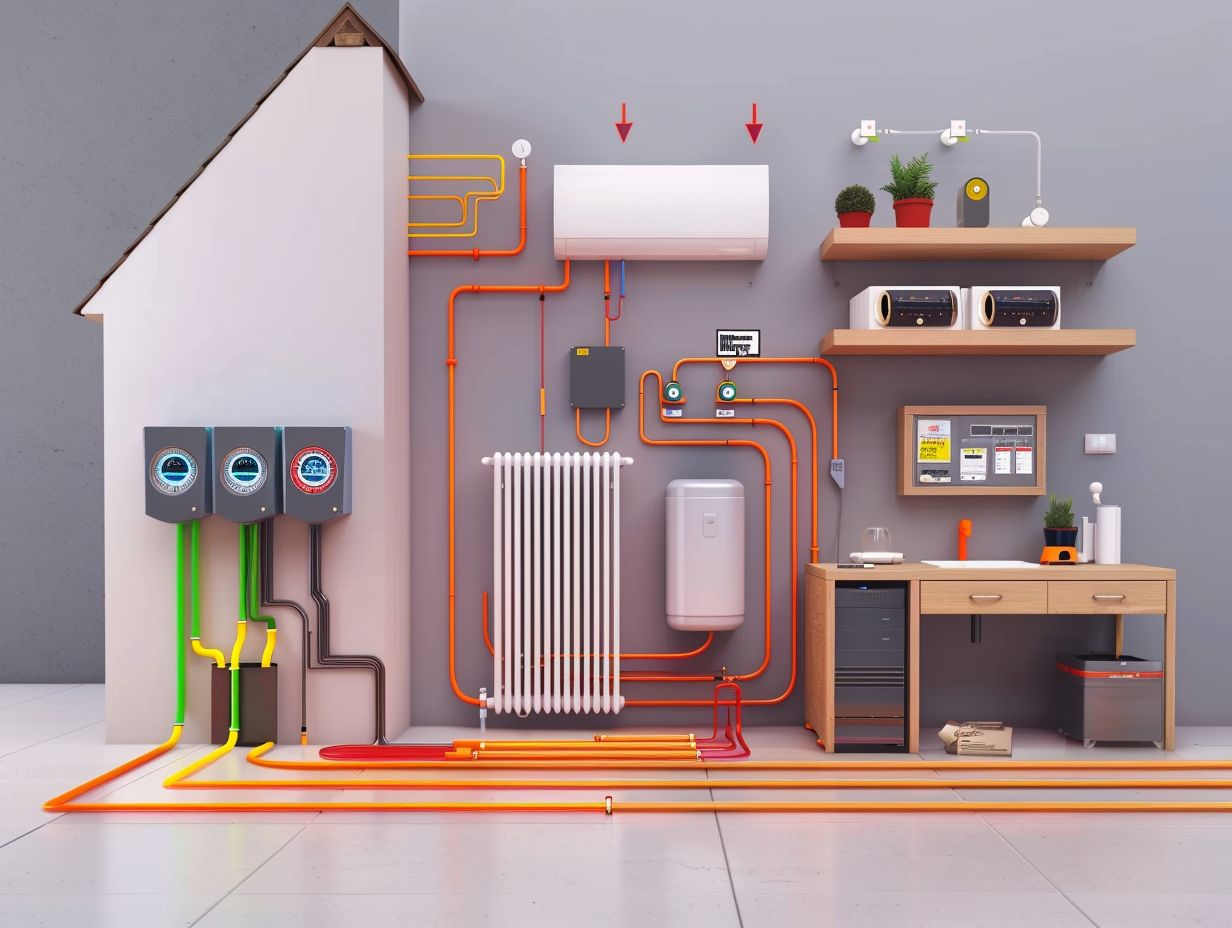
The design and functionality of contemporary radiators cater to both your practical and aesthetic requirements. Options like towel rails for bathrooms and kitchens offer more than just warmth, providing additional benefits such as effective towel drying.
Innovative designs feature sleek vertical panels that optimise space in smaller rooms, making them perfect for cosy bathrooms or compact kitchens. These radiators incorporate modern technology, allowing for remote control and convenient temperature adjustments.
Some models include built-in shelves or hooks for hanging kitchen accessories or bathroom essentials, seamlessly blending with the room’s decor and adding a touch of functionality.
Factors to Consider When Choosing Between Dual Fuel Heating and Contemporary Radiators
When considering the choice between dual fuel heating and contemporary radiators, you must take into account factors such as room size, property layout, preferred energy sources, and the overall heating system. Each option offers distinct advantages depending on the specific heating needs and property configurations.
Home Layout and Heating Needs
When deciding on the most suitable heating solution for your home, it is essential to take into account the layout of your home and your specific heating requirements. Evaluate factors such as room sizes, property structure, and individual heating needs to make a well-informed choice between dual fuel heating and contemporary radiators.
Choosing the appropriate heating system for your home necessitates careful consideration of the layout of each room. Rooms with high ceilings, for example, may require a heating solution that can evenly disperse warmth throughout the area. Rooms with large windows might benefit from underfloor heating to counterbalance potential heat loss.
By customising your heating selections to align with the distinct characteristics of each room, you ensure efficient and effective heat distribution, resulting in a comfortable living environment tailored to the specific layout of your property.
Budget and Maintenance
When choosing between dual fuel heating and contemporary radiators, it is essential to consider your budget constraints and long-term maintenance requirements. Evaluate the initial costs, operational expenses, and maintenance demands to select the most cost-effective and efficient heating system for your property.
Dual fuel systems offer the advantage of utilising both gas and electricity, providing flexibility and potentially lower energy costs depending on the current market rates.
Conversely, contemporary radiators, when equipped with efficient radiator valves, can optimise heat distribution and minimise energy wastage, contributing to reduced monthly expenses.
Budget management plays a crucial role in determining the financial feasibility of these heating options. Factors such as installation expenses, routine maintenance, and overall energy consumption should be considered in your long-term financial planning.
Installation Process for Dual Fuel Heating and Contemporary Radiators
The installation process for dual fuel heating and contemporary radiators requires adherence to specific steps and requirements to achieve optimal performance. Each stage of the installation process, from selecting appropriate locations for radiators to connecting heating elements, plays a crucial role in enhancing the overall efficiency and functionality of the heating system.
Steps and Requirements
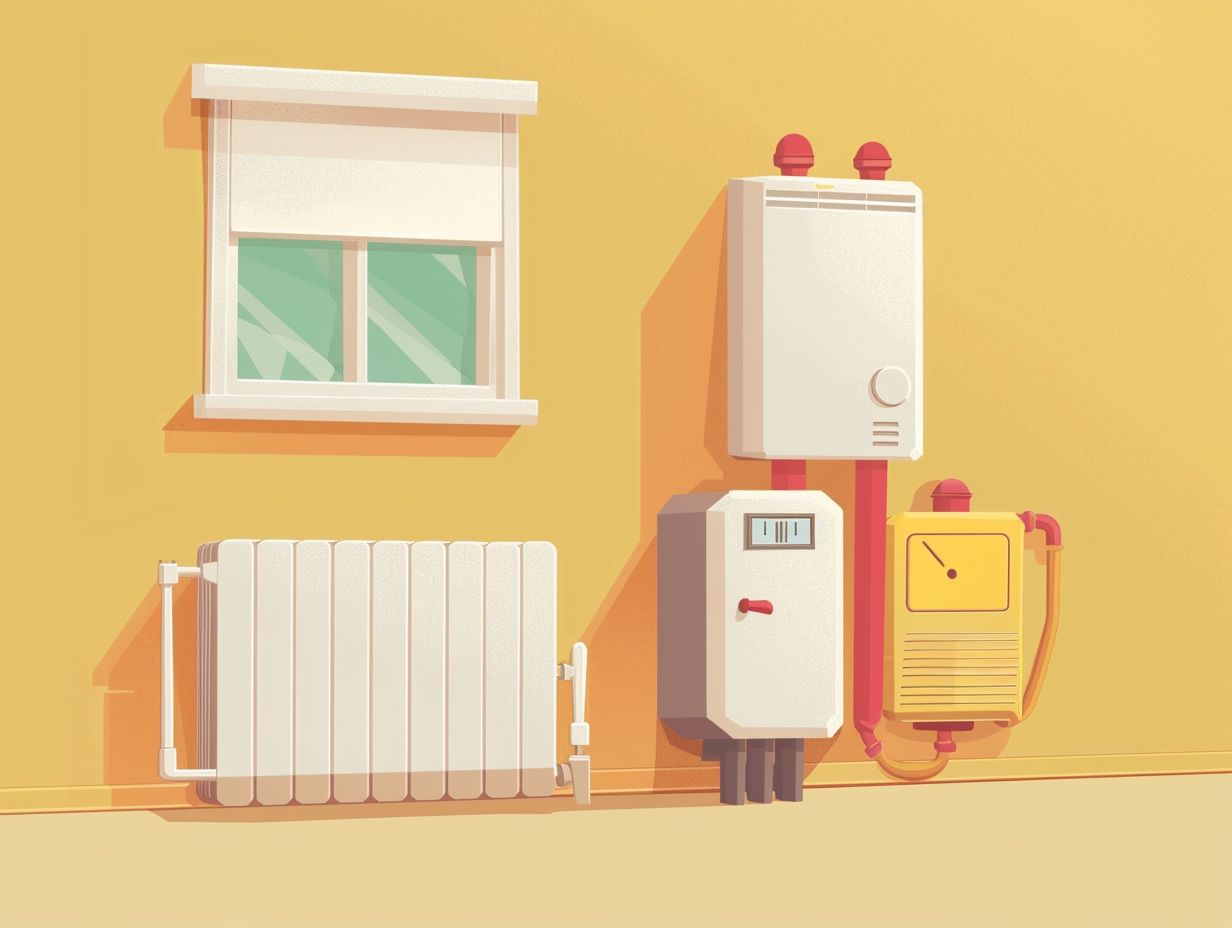
When installing dual fuel radiators and towel warmers, you must carefully consider factors such as heat output, positioning, and functionality in specific areas of your property. Understanding the installation steps and requirements is crucial to maximising the heating efficiency and comfort provided by these heating solutions.
Proper positioning is vital to ensure that the radiators and towel warmers effectively distribute heat throughout the room.
It is essential to evaluate the layout of the space and determine the best locations for installation. Adjusting the heat output is necessary to achieve the desired temperature levels and energy efficiency.
By adhering to the manufacturer’s guidelines and seeking advice from a professional if necessary, you can ensure that the installation process is carried out correctly and that the dual fuel radiators and towel warmers operate at their full potential.
Comparison of Energy Efficiency
When comparing the energy efficiency of dual fuel heating and modern radiators, you need to consider factors such as heat output, BTU calculations, and the overall performance of the heating system.
Utilising BTU calculators and energy-efficient models will allow property owners to make informed decisions that optimise heating efficiency and reduce energy consumption.
Calculating and Comparing Energy Usage
Calculating and comparing energy usage between dual fuel heating and contemporary radiators requires the utilization of BTU calculators and an analysis of heat output.
By comprehending the energy sources and heating solutions involved, you, as a property owner, can make informed decisions to optimise energy efficiency and decrease heating expenses.
Dual fuel heating systems integrate the use of both gas and electricity to deliver heat, presenting both flexibility and efficiency.
Conversely, contemporary radiators typically rely solely on electricity. BTU calculations are integral in determining the necessary heat output for each room, ensuring that energy consumption is tailored to specific requirements.
By assessing the energy consumption patterns of these heating solutions, individuals can ascertain the most cost-effective and sustainable option for their properties.
Frequently Asked Questions
What is the difference between dual fuel heating and contemporary radiators?
Dual fuel heating utilises both electricity and gas to heat a home, while contemporary radiators only use electricity.
Which option is more cost-effective?
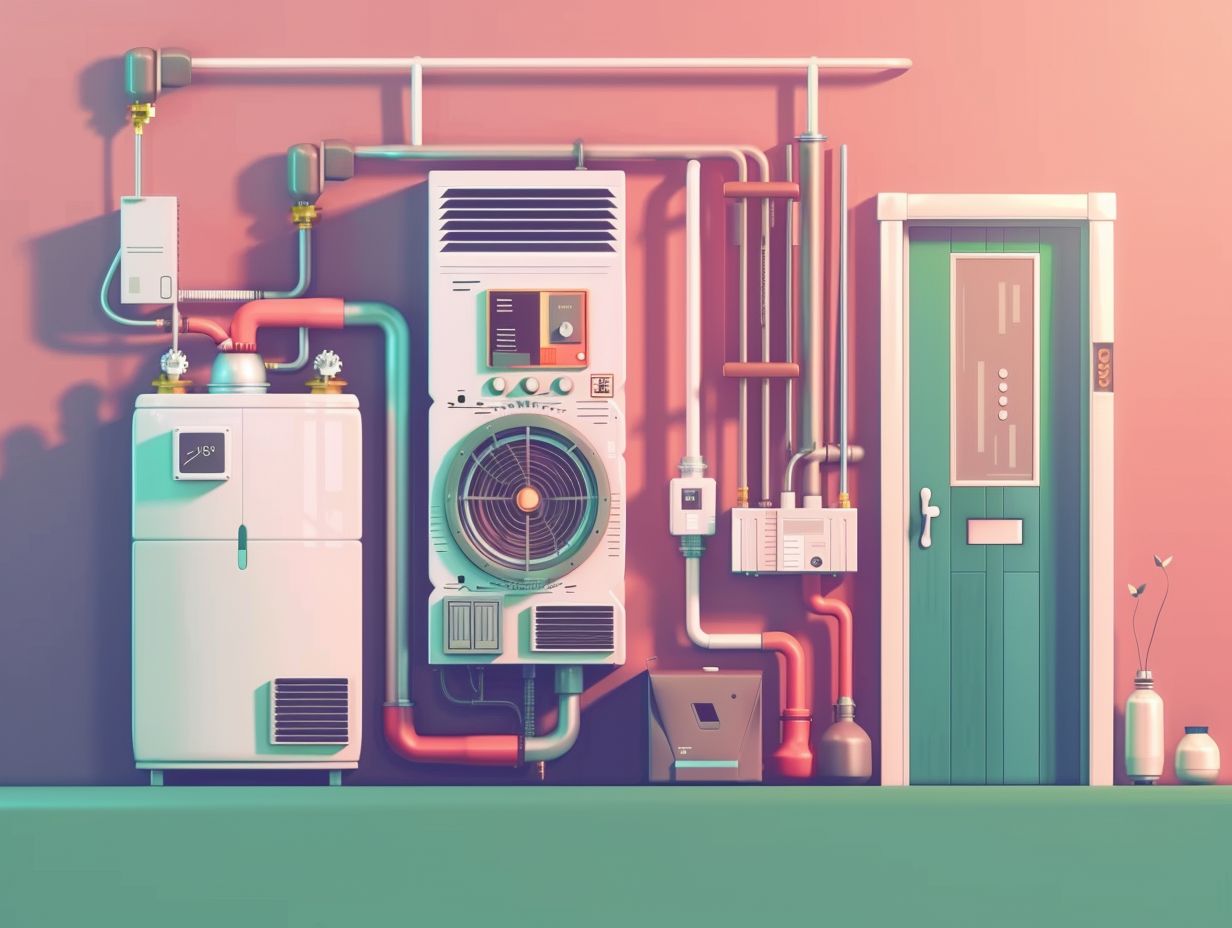
In most cases, dual fuel heating is more cost-effective due to the use of both electricity and gas, which can be cheaper than solely relying on electricity for heating.
Can contemporary radiators be used with dual fuel heating systems?
Yes, contemporary radiators can be used with dual fuel heating systems as they are compatible with both gas and electricity.
Do dual fuel heating systems provide better heating performance?
It ultimately depends on the individual system and its specific features, but generally, dual fuel heating systems are known to provide more efficient and consistent heating compared to contemporary radiators.
Are there any eco-friendly options for dual fuel heating or contemporary radiators?
Yes, there are eco-friendly options for both dual fuel heating and contemporary radiators, such as using renewable energy sources or investing in energy-efficient models.
Which option is easier to install and maintain?
In terms of installation, contemporary radiators are typically easier to install as they only require electricity. However, both options require regular maintenance to ensure efficient and safe operation.

